Updated 11.24.21 @ 5:52p
You must be logged in to view this content. Click Here to become a member of IndyWX.com for full access. Already a member of IndyWx.com All-Access? Log-in here.

Nov 24
Updated 11.24.21 @ 5:52p
You must be logged in to view this content. Click Here to become a member of IndyWX.com for full access. Already a member of IndyWx.com All-Access? Log-in here.
Permanent link to this article: https://indywx.com/long-range-update-looking-at-the-1st-half-of-december/
Nov 03
Updated 11.03.21 @ 9:50p
Quick-Hitter Highlights of the ’21-’22 Winter season:
I. Expecting a fast, cold, and wintry start to the season.
II. Active times continue, but expecting a pull back in the cold mid and late winter.
III. Overall, expecting a slightly warmer than normal winter, locally.
IV. Forecasting 20″ of snow at IND this winter (first flake to last flake- average is 25.5″).
A weak La Nina is expected to dominate headlines, globally, this winter. We know no Nina, Nino, or La Nada event is going to behave identical but we can look back at the archives and pull together analogs to perhaps get some sort of indication of what the coming months will dish up!

In short, we expect an active storm track through the Ohio Valley and upper Mid West this winter. A “typical” La Nina pattern (remember the disclaimer above, however) features a wet and cold Northwest with an active jet stream pushing frequent storm systems through the Ohio Valley and interior Northeast. Many times, the aforementioned jet stream pattern can lead to an unseasonably warm and dry south-central into the Southeast- overall.

There are certain wild cards that can create headaches in any winter, including the NAO, AO, MJO activity, and Pacific patterns (namely, PNA and EPO).
In our research looking back at La Nada and weak Nina events, there’s a clear tendency for fast starting winters. We’ve been sharing this idea through the summer months and continue to believe a rather significant and perhaps dramatic shift towards cold, wintry conditions looms to wrap up November and head into December.
Getting right to the point, we lean towards December featuring average temperatures that range close to 3° below normal and features above average snowfall of 7″ to 10″ across most central Indiana reporting sites, including IND (where the Dec. average is 6.4″).
The way the CFSv2 seasonal handles the evolution in the upper levels over the course of the late fall into early spring makes sense to us.
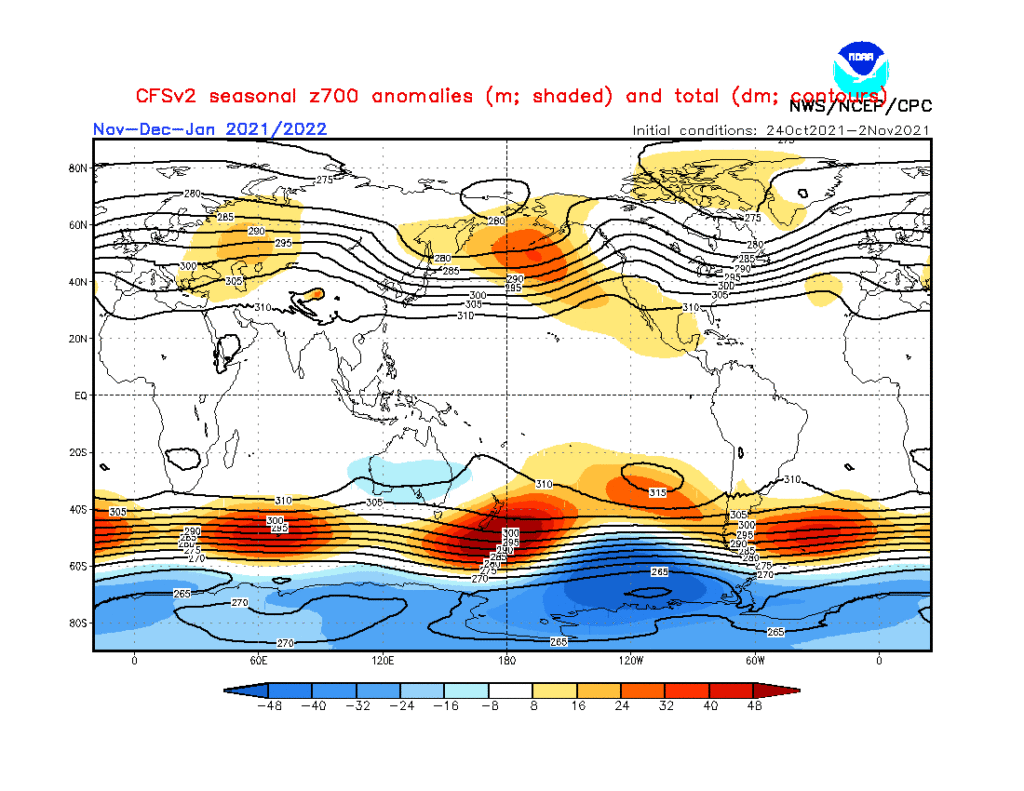


Note how the trough begins to pull back into the West towards mid and late winter. While the active storm track will likely continue to keep us on the playing field for the “perfect marriage of moisture and cold,” the overall pattern should lead to more of a wet/ warm/ mixing issue as compared to cold being able to maturely lock-in to provide an above average snow season across central and southern portions of the state. Across the northern 1/3 of the state, that’s a different story as early season lake effect will also add up!
The idea here is that while we get off to a fast start this winter, it likely will transition towards a milder regime just after the New Year and continue for the better part of the remainder of the winter. That’s not to say we won’t get transitional cold blasts (as is the case in any winter around these parts), but what should be a pattern that drives persistent cold to open meteorological winter is likely to shift in a manner that pulls that cold into the West and opens us up to relatively milder times though continued active for the remainder of January and February. This is based on the current and expected development of sea surface temperatures in the central Pacific, as well as the anticipated MJO activity.
The wild card that can *potentially wreck havoc in this idea 
The IndyWx.com 2021-2022 Winter Outlook for Indianapolis includes a total of 20″ of snow (first flake to last flake) and temperatures (meteorological winter: Dec. through Feb) that run 1.5° above normal.
Happy snow, y’all!
Permanent link to this article: https://indywx.com/2021-2022-indywx-com-winter-outlook/
Oct 20
Updated 10.20.21 @ 7a
You must be logged in to view this content. Click Here to become a member of IndyWX.com for full access. Already a member of IndyWx.com All-Access? Log-in here.
Permanent link to this article: https://indywx.com/video-wet-2nd-half-of-the-weekend-longer-range-chatter-around-the-pattern-into-november/
Aug 26
Updated 08.26.21 @ 8:48a
Is there anything more polarizing than pumpkin spice products?! Count my house in favor of rolling these items out in late August. (I think my wife bought her first autumn candle of the year a few weeks ago and, rest assured, upon our return from the beautiful Gulf Coast, it will be lit almost immediately).
Despite the fact we’re in the hottest and most humid stretch of the summer (mind you, in a summer that really hasn’t been that bad from that from a heat perspective), we’re at a point where we’re shaving off nearly 2 and a half minutes of daylight per day.
As we look at the upcoming 3-4 weeks, the primary drivers still appear to be the EPO and MJO movement. Pardon us if you’re tired of hearing this word, but it’s still the best, in our opinion, when describing the upcoming several weeks: “transient.”
Consider the more amplified look to the MJO:
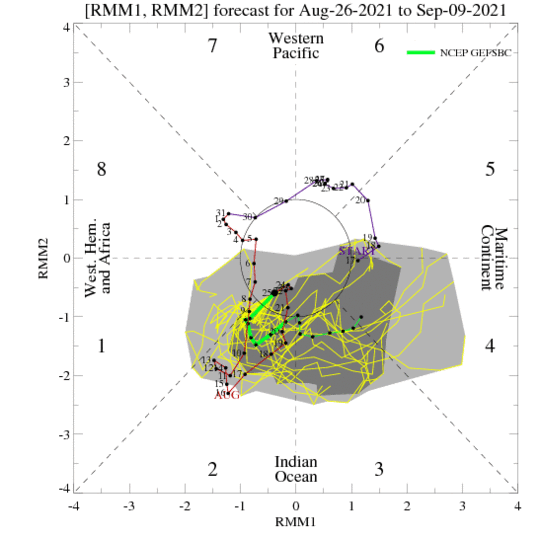


As well as the EPO:
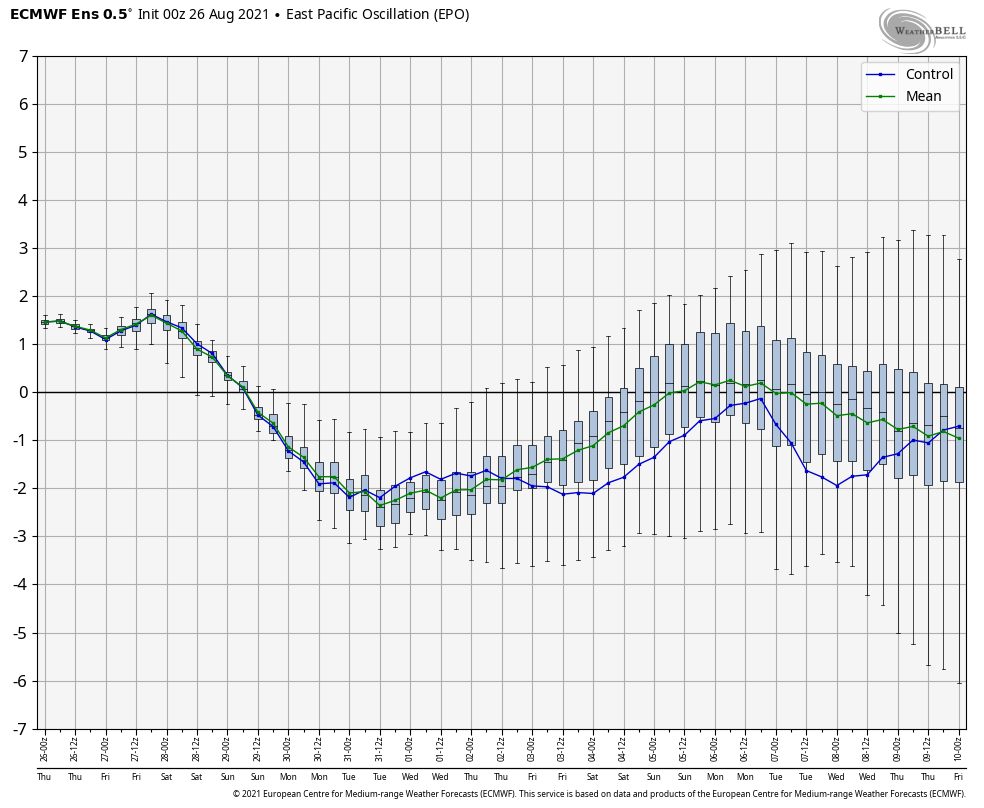
Thinking here is that the EPO and MJO will work in tandem to drive a very transient regime over the next 3-4 weeks. Perhaps the past few days have been a hint of what’s to come with more appreciable precipitation into the “heart” of central Indiana- an area that, for the most part, missed out over the latter half of July and first half of August. Officially, Indianapolis is now only 0.89″ in the hole.
Let’s take a look at some of the more trusted medium-long range computer model guidance:
JMA Weeklies
Week 1
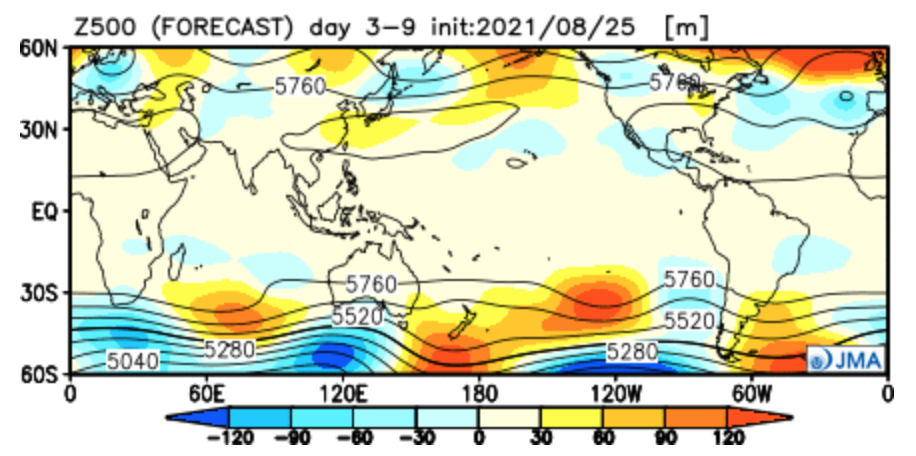
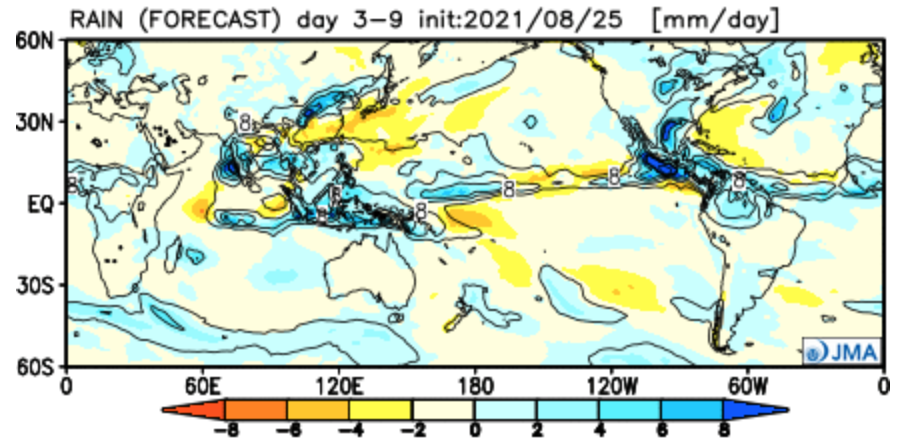
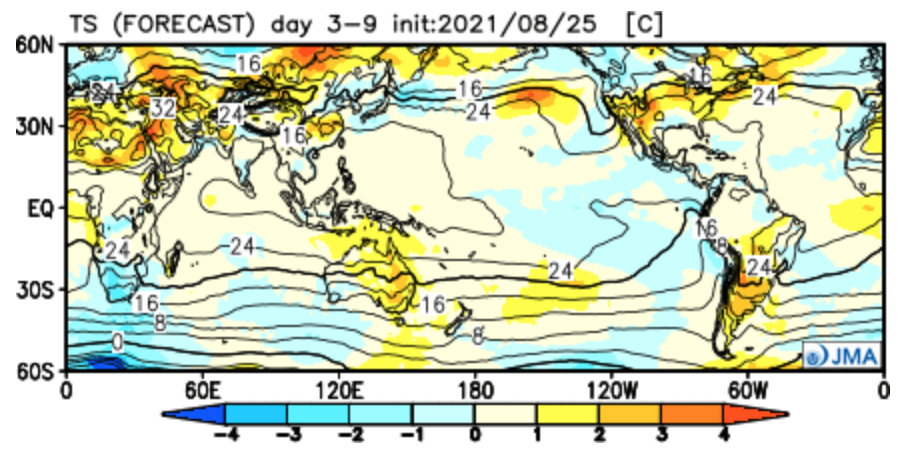
Week 2
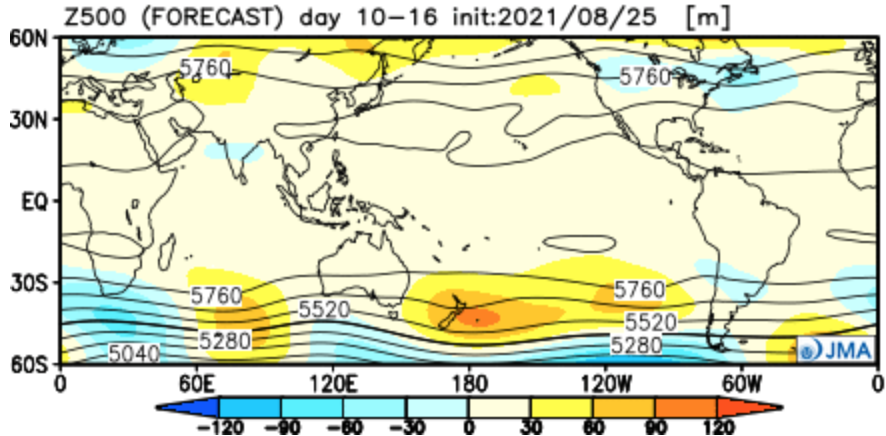

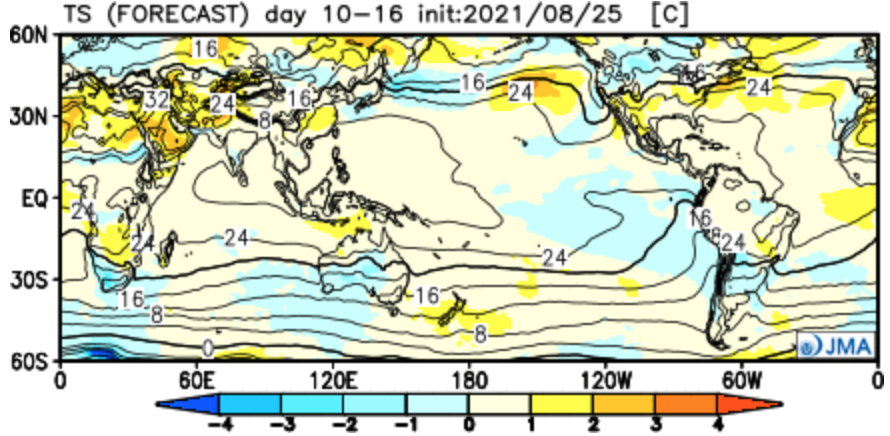
Weeks 3-4



CFSv2
Weeks 1-2


Weeks 3-4
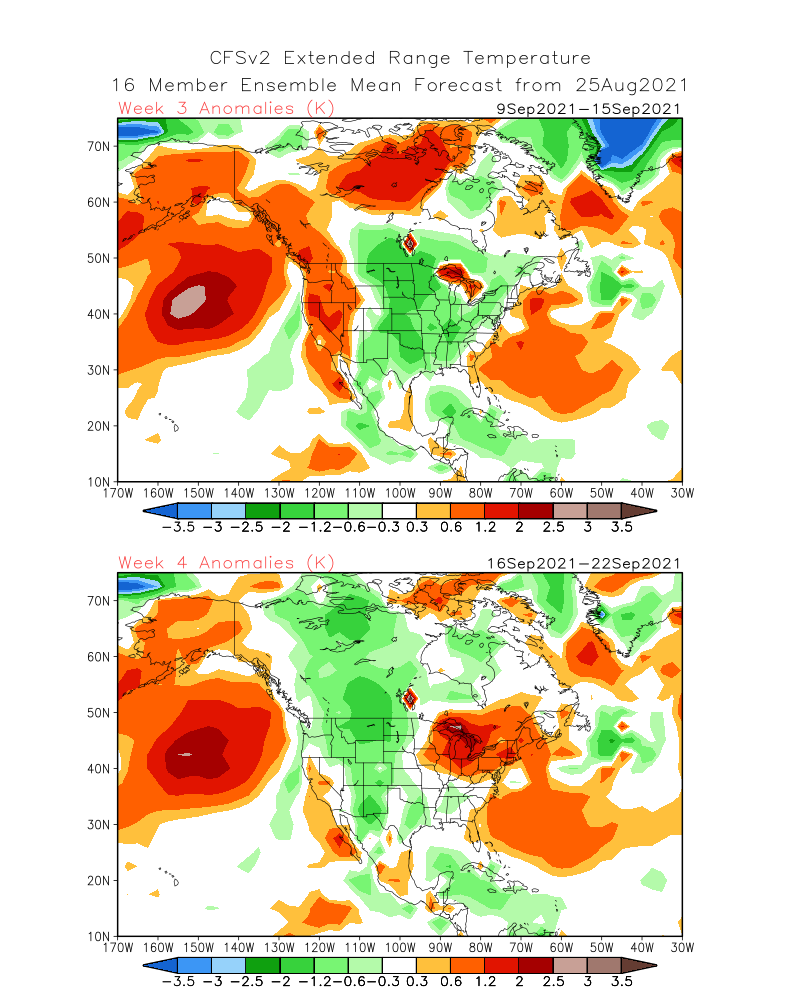

European Weeklies
Week 1

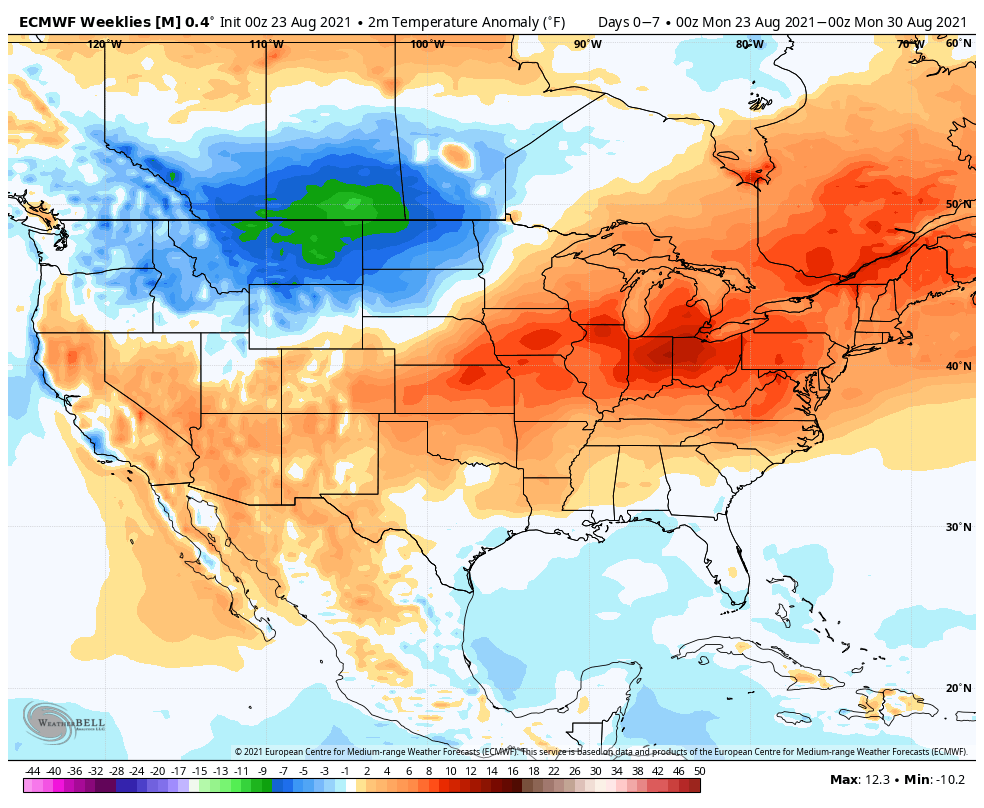
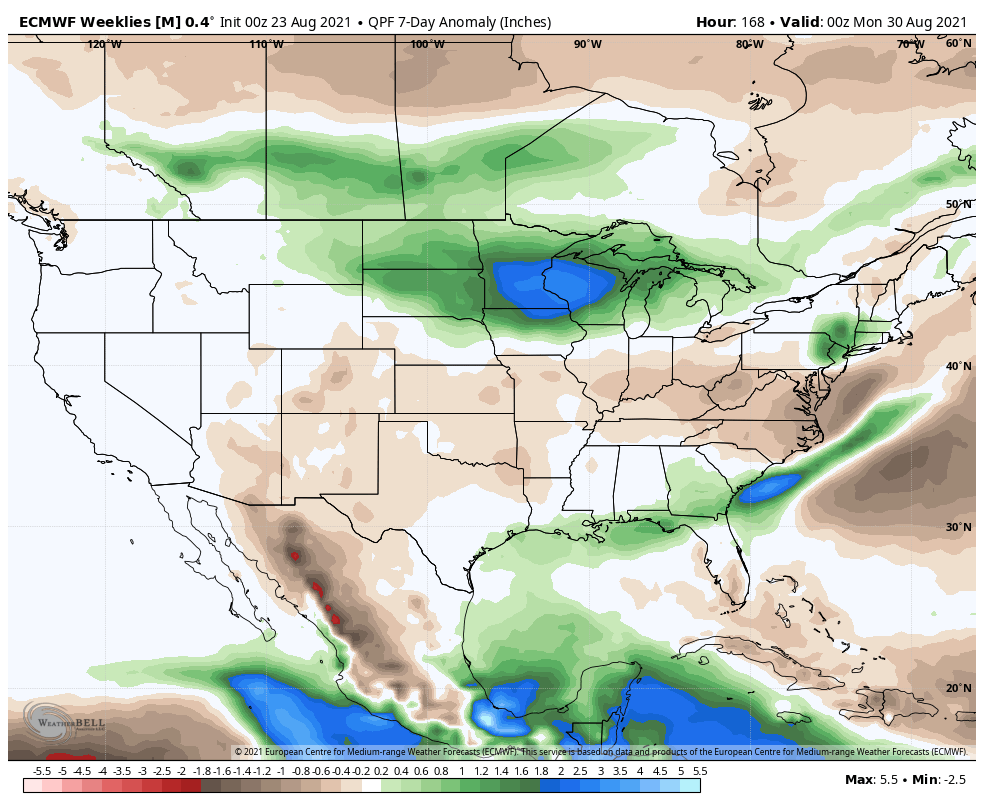
Week 2

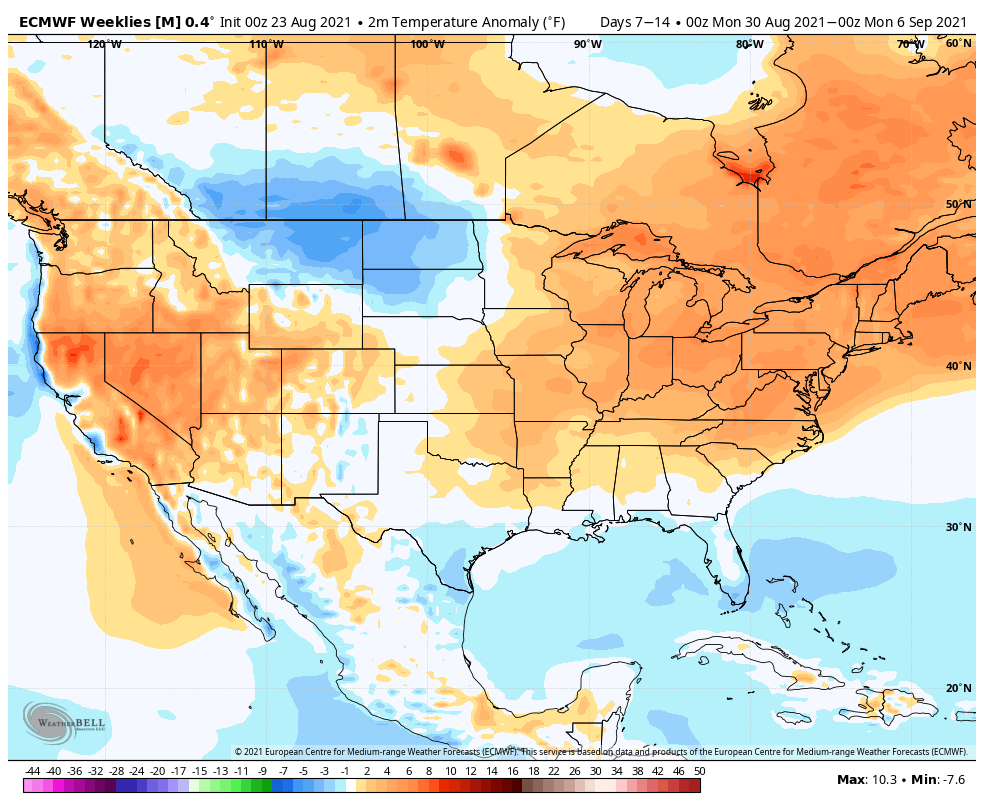

Week 3


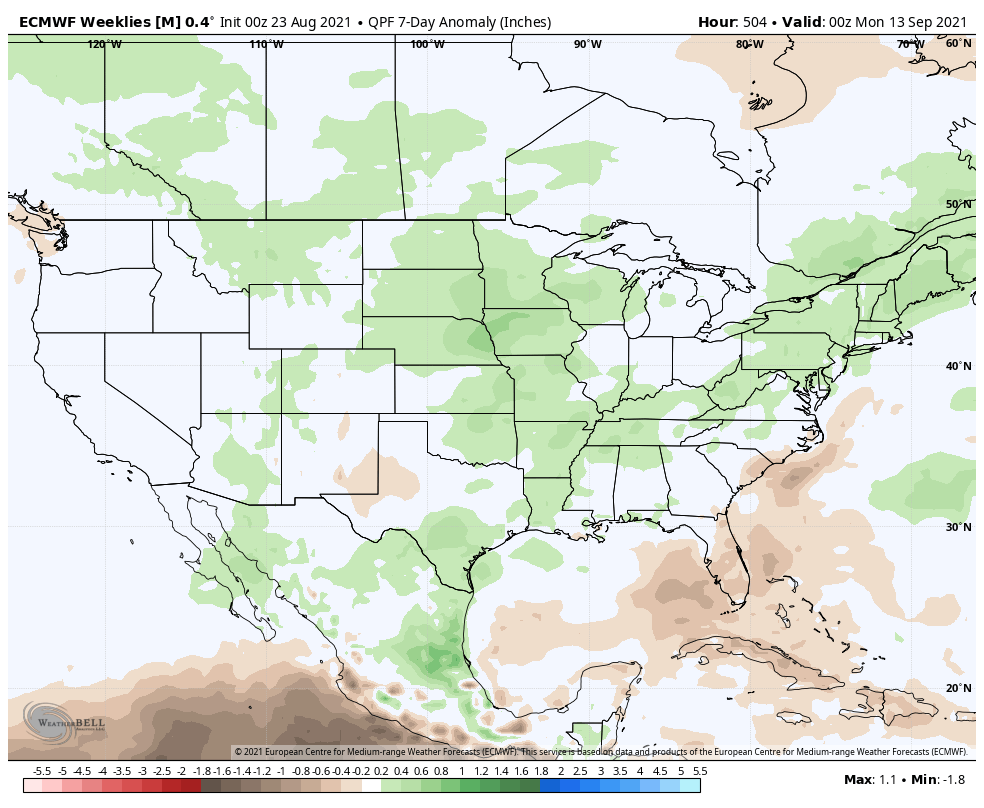
Week 4



The largest takeaway between the drivers (MJO and EPO) and computer guidance above is that we will inject a wetter regime back into the mix over the upcoming 2-4 weeks (especially compared to the past 4 weeks). While we’ll likely cool somewhat in early September, the pattern, as a whole, looks warmer than normal over the upcoming 2 to 4 weeks, locally. The opposite can be said for the northern Rockies as early winter conditions will make their presence felt during this period. It’ll be particularly interesting to see if the JMA is correct in driving that strong western trough in the Weeks 3-4 time period. Should that come to fruition, it would likely pump unseasonably hot conditions across the East during that time frame, but, eventually, a piece of that trough may shift east late month and set up a cooler regime to end September.
Regardless, be sure to enjoy that PSL…
Permanent link to this article: https://indywx.com/meteorological-fall-only-5-days-away-long-range-update-into-mid-september/
Aug 06
Updated 08.06.21 @ 7:50a
You must be logged in to view this content. Click Here to become a member of IndyWX.com for full access. Already a member of IndyWx.com All-Access? Log-in here.
Permanent link to this article: https://indywx.com/video-timing-out-best-rain-chances-in-the-week-ahead-additional-fall-winter-rambles/